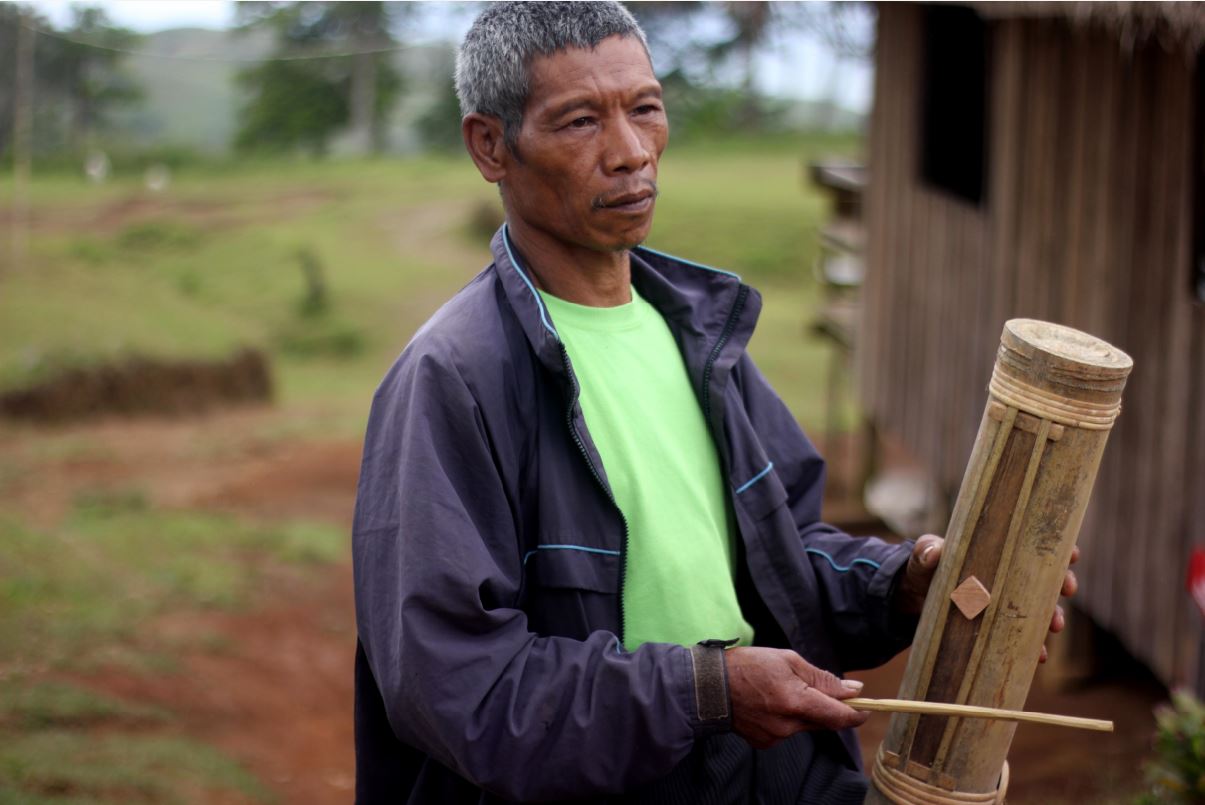
Bamboo Musical Instrument (BMI) maker and performer Datu Rodelio “waway” Saway is not called “Tatay” for nothing – he is a Master to his apprentice for keeping the Talaandig musical heritage intact by mentoring young members of their tribe.
The Datu of the Talaandig tribe is a teacher at the Talaandig School of Living Traditions and a well-known performing artist.
The Talaandig tribe’s home is at the picturesque foothills of the Kitanglad Mountain Ranges in Bukidnon. Inspired by nature, they are able to create music reminiscent of the rustling of leaves and the chirping of birds.
Budding community artists would always go to Tatay Waway not only to learn how to play and craft their indigenous musical instruments but also to learn about spirituality and nature.
“We use our traditional instruments to pray and connect with the Divine. Playing them is like opening a portal to the spiritual world,” explained Saway who has traveled the world showcasing the Talaandig’s own brand of music.
But Datu Saway’s mission has encountered some difficulties in making the bamboo musical instrument. “Despite the availability of tools that makes the production of bamboo musical instruments easier, there are still issues affecting the durability of the instruments. There are times when our BMIs crack when brought to temperate countries. Some get infested by bukbok (powder-post beetle),” said Datu Saway in a Department of Science and Technology (DOST) release sent to Good News Pilipinas.
Under the leadership of the DOST-Forest Products Research and Development Institute (DOST-FPRDI), a research program is now being conducted aimed at making better-quality BMIs and help them preserve their rich musical tradition.
The BMI enhancement initiative, in partnership with the University of the Philippines Diliman’s Center for Ethnomusicology and the Philippine Normal University, targets to develop technologies that can help people like Saway and other local BMI makers and users.

According to Program Leader Aralyn L. Quintos “We have been going around various indigenous communities and BMI production sites in the country to talk to key people and understand how important BMIs are in their local culture. We want to know how we can work together with them to improve these instruments,”
The R&D program seeks to develop technologies that will prolong the life of bamboo without negatively affecting the musical instruments’ sound quality; standardize the production of selected BMIs; develop prototype design; analyze raw material sources and existing markets; and build a BMI processing facility.
Datu Saway has crafted numerous BMIs, including the pulala (lip valley notch flute), tumpuy (chip-on-ledge flute), hulagteb (side-blown flute), takumbo (parallel-stringed zither) and bantula (slit drum).
He said that long before their BMIs have been mass produced, they have been traded for other important things. “We have a lot of creative people here. The Talaandigs have been producing BMIs for a long time already, and I think we are ready for their mass production. What we lack, however, are technologies, particularly a treatment facility for bamboo,”
The most popular Bamboo Musical Instrument in the Philippines is the Bamboo Organ of Las Piñas which celebrated its 195th anniversary in 2019.
The Betis Pampanga church launched the Philippines’ second Bamboo Organ during the Christmas season dawn masses in December 2019.
SEND cheers to the Talaandig tribe and the UP-PNU-DOST partnership for helping preserve a musical heritage!
Want to know how to be a Proud Pinoy? Like, Follow, Subscribe to GoodNewsPilipinas.com and our socials Facebook, Twitter, Instagram, Good News Pilipinas! TV on YouTube, for new story notifications and e-mail newsletters for updates on more Filipino Pride stories.










